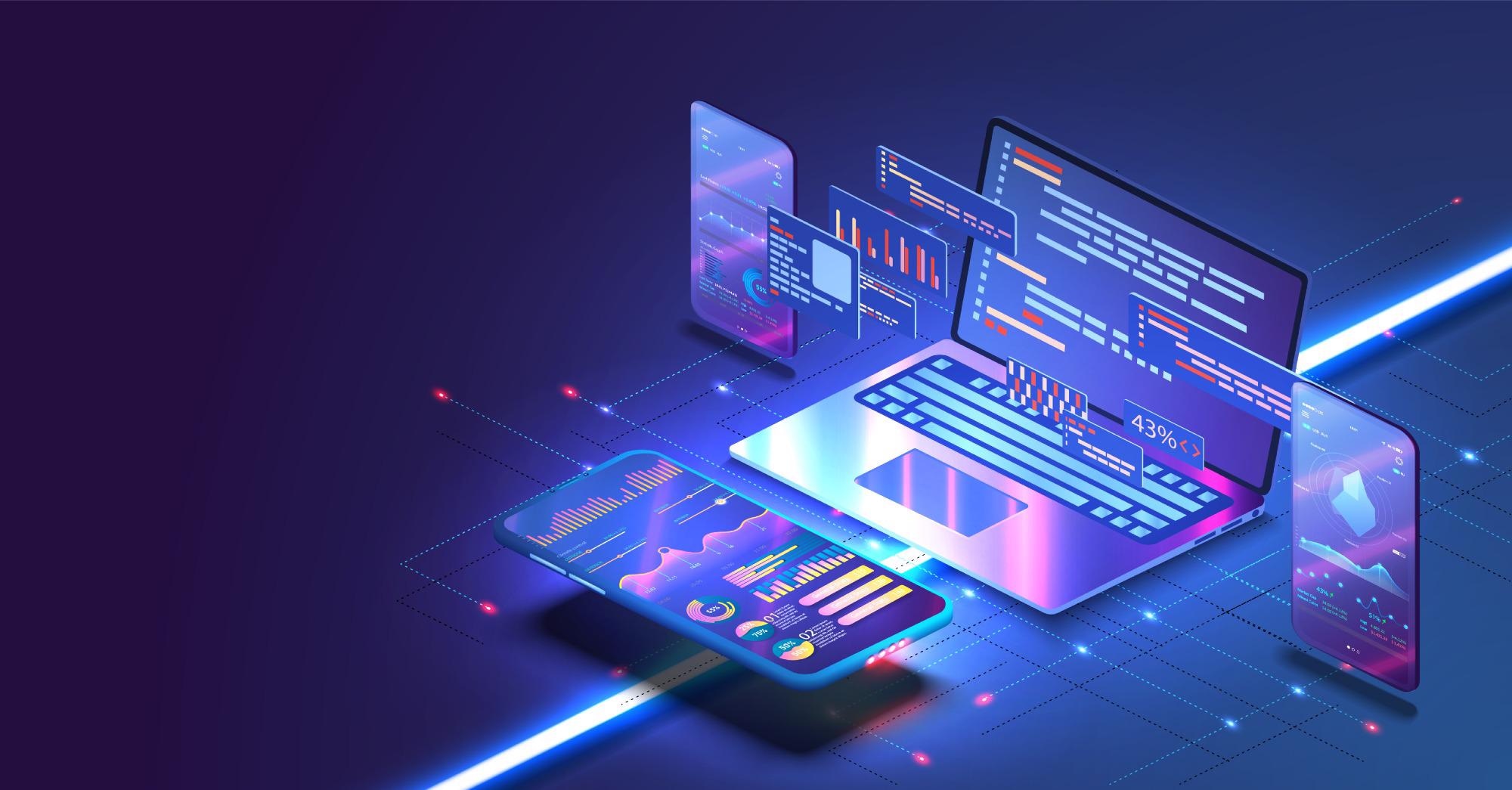Nanoanalysis is the sub-branch of nanotechnology that deals with identifying, observing, and manipulating particles and devices at the nanoscale of size – ranging from 0.1 nm to 100 nm. Regardless of the inspection or analysis technique employed, researchers and developers rely on computer software to carry nanoanalysis out effectively.

Image Credit: ZinetroN/Shutterstock.com
Nanotechnology can involve making devices that are smaller MEMS (microelectromechanical systems) in scale but which still perform useful or complicated tasks. Nanosized devices can be just a molecule across and are generally produced with chemical processes used to "grow" or formulate valuable structures.
The development of advanced imaging and sensing technology in the twentieth century – such as electron microscopy, for example – is a crucial enabler for the development of nanotechnology. These technologies often include methods that require extensive computation – such as spectrometric analyses – or produce data that needs to be further interpreted to be helpful or informative.
That is the role of software. It works with nanoanalysis devices and helps operators extract, understand, and analyze the data they can gather about nanoscale materials and interactions.
Software is used to create and analyze models of nanostructures where classical mechanics govern physical interactions and dimensions in the nanoscale range and where quantum mechanics governs physical interactions.
Molecular design software is another type of software developed for nanoanalysis. This enables researchers to design models for new molecules (de novo) by including useful capabilities like graphic displays and outputs, interactive molecular drawing features with conformational editing and optimizing molecule geometry. It can also be used to build polymeric molecules, crystals, solvated systems and support other aspects of force field development.
In this sense, software or computing are also key enabling technologies for the development of nanotechnology.
As computing is one of the most significant application areas for nanotechnology, this enabling effect is reciprocal: as software progresses, nanoanalysis and nanotechnology can progress; as nanotechnology progresses, the software can also progress; and so on in a virtuous cycle.
Pro Suite for Scanning Electron Microscopy
Pro Suite is a software package that enhances the features of the Phenom desktop scanning electron microscopy (SEM). The Phenom is a powerful tool for nanoanalysis, capable of imaging in the nanoscale range.
SEM creates images by focusing a beam of electrons and rastering it across the sample's surface. By recording and analyzing the electrons that bounce back from the surface, SEMs can provide information about the sample's chemical makeup, nanoscale topography, and even some dynamic interactions.
For the Phenom SEM, Pro Suite can help users to extract information from images generated by the device. The software has multiple preset features that are specific to different nanoanalysis requirements.
These include automated image mapping, a remote user interface, elemental mapping and line scan, particle measurements, fiber measurements, and 3D roughness reconstruction.
Automated image mapping lets users collect images automatically in a regular grid. The remote access feature means users can use the device from anywhere else; they do not have to be in the laboratory. It also gives customer support teams the ability to optimize the microscope's performance and deal with any issues.
The system's intuitive, single page user interface (UI) simplifies the operation process. This supports a key task for software in nanoanalysis: making it easier for human operatives to use devices and work with data in an intuitive, efficient, and mediated way.
New Generation Operating and Analysis Software in Semilab SE-2000
The SE-2000 is an optical platform that performs spectroscopic ellipsometry measurements with optional rotating compensator optics. It is used for non-contact, non-destructive optical measurements on substrate materials used in nanotechnology.
It can work with both single and multi layer samples, and measures optical properties and the thickness of thin films. These measurements are used for nanoanalysis in advanced research and development for materials science.
To drive the high-powered nanoanalysis hardware, it comes equipped with a software package including advanced operating and analysis software (SAM/SEA) and smart electronics from Semilad.
Intuitive SurPASS 3 Software
Anton Paar's SurPASS 3 is a series of electrokinetic analyzers used in solid surface analysis. The device conducts direct analysis of surface zeta potential, which is associated with a solid or liquid material interface's surface charge.
Zeta potential is an important property to understand when designing specialized materials, and a key subcategory of nanoanalysis.
To help researchers, the SurPASS 3 comes with intuitive software that displays important findings within just a couple of minutes for high sample throughput rates.
The Next Generations of Nanoanalysis Software
The trends for software used in nanoanalysis are a reflection of wider trends in software development: more intuitive operation, more automation, and more cloud-based or remote features. These trends are influencing software development across the entire sector, from mobile operating systems to firmware for industrial machinery.
In nanoanalysis, the advantages are clear. More intuitive operation and more automation both mean that non-specialists can make informed and accurate observations and enable specialists and industry to achieve higher throughput rates. Cloud-based and remote features reduce the limitations of individual facilities' available computer processing power or server space.
Whichever direction the future development of nanoanalysis software will take, one thing is certain: nanotechnology will continue to rely on cutting-edge software to enable nanoanalysis, which in turn enables its own development.
Continue reading: Quantification and Visualization of Single Macromolecules with AFM Software.
References and Further Reading
AZoNano (2022) Nanotechnology Equipment. [Online] Available at: https://www.azonano.com/nanotechnology-equipment-index.aspx
AZoMaterials (2022) Phenom Pro Suite for the Phenom Desktop Scanning Electron Microscope (SEM). [Online] Available at: https://www.azom.com/software-details.aspx?SoftwareID=39
Arizona State University (2022) What is SEM - scanning electron microscopy? [Online]Available at: https://cores.research.asu.edu/materials/what-sem-scanning-electron-microscopy
Disclaimer: The views expressed here are those of the author expressed in their private capacity and do not necessarily represent the views of AZoM.com Limited T/A AZoNetwork the owner and operator of this website. This disclaimer forms part of the Terms and conditions of use of this website.